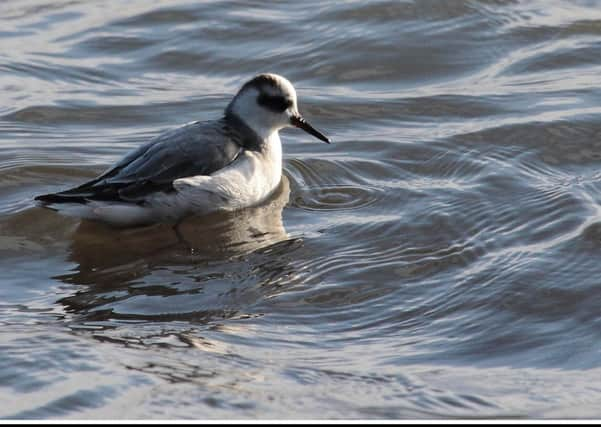Roy snaps a rare visitor
Larne Through A Lens snapper Roy Hutchinson got a surprise when he spotted a rare visitor to our shores just outside Drains Bay.


The grey phalarope is an Arctic-breeding wader which sometimes comes to the coasts of the UK after storms. Like the other phalarope species, the female is the more colourful and leaves the male to incubate the eggs and bring up the young. In North America, these birds are known as red phalaropes, due to the their orangey-red breeding plumage. Roy’s photo has created a large interest in bird watching websites all over Ireland.